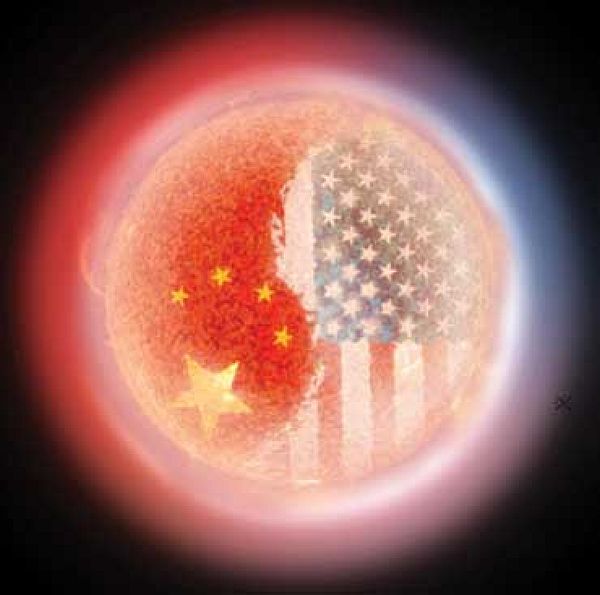
China and the USA are intertwined with every international dilemma. These two great world powers are fighting a ‘quiet war,’ characterized by interdependence and rivalry.
After Obama’s nine day visit to Asia, the Sino-American agenda marks a turn: China and the USA, with their roles as superpowers, are going to influence all the world’s struggles, from the environment to the economic crisis, from human rights to nukes, even bilateral issues between China and India.
After the war, post-war and Cold War eras, optimists have explained that we’ve entered into “the end of history,” of which Kant spoke. Pessimists thought the contrary – that the world was embarking upon an era of chaos in which terrorism and lawlessness would sweep across nations. In reality, this new phase of history should be known as the era of a “quiet war” polarizing the U.S. against China.
These two countries are now the world’s great economic powers, beating out Japan and Germany. They are incredibly interdependent: the U.S. has been able to finance its growth thanks to Chinese savings, permitting its most impoverished citizens to buy Chinese products with artificial purchasing power from the overestimation of value of their homes, and in return, giving China the means to build up more reserves. Their elites intermingle as well: while the Chinese come en masse to study in American universities, Obama announces that he will send at least 100,000 young Americans to study in China over the next four years.
Co-dependent rivals, China and the U.S. make up a veritable G2. The two countries are also, more and more, adversaries in other domains, and we see them clash on many platforms: fuel; crude resources; the environment; oceans and fisheries; influence in Africa, central Asia, Russia and even in India and Europe. Next month, China will produce and sell passenger aircraft competitive with those of Boeing and Airbus. Geopolitics are going to change.
In the Pacific, where the U.S. believes itself to be sole master after the disappearance of the USSR, the two superpowers begin to size each other up militarily: China disposes of ballistic missiles precise enough to destroy freighters at 1,500 kilometers from its coastline, hunting the five American aircraft carriers that cross independently in this zone. Tomorrow, they will size each other up in the same way in South and Central Asia- in Siberia, perhaps.
The economic crisis marked the beginning of the conflict: China voiced concerns about its massive reserves collapsing under the debt of the USA, which in return denounced the overvaluation of the Yuan. The U.S. believes itself to be the world’s one and only superpower. It believes that the doomed communist system in Beijing, like in Moscow, will move China to complacency, and subsequently, the U.S. will have to teach it what it must do to avoid decline.
For the moment, the masters of this “quiet war” are putting into place the conditions of their co-management of the world: a G2, masked by a friendship of embraces and low blows, gradually replaced by the Soviet-American-style duopoly of the Cold War.
Naturally, Europe will be absent throughout all of this.

Leave a Reply
You must be logged in to post a comment.